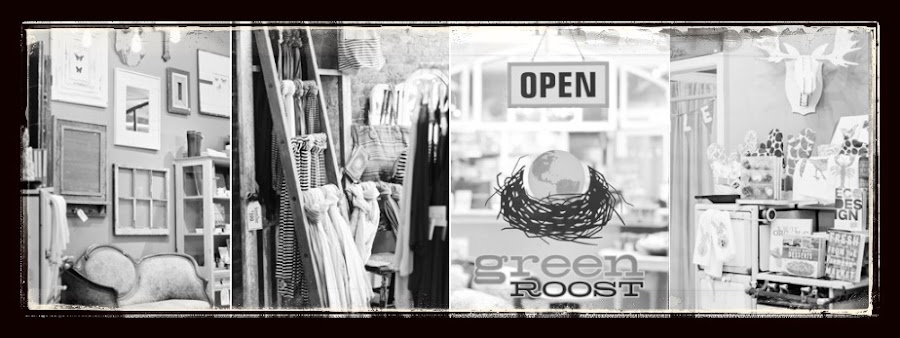This week, I finished a project I've been wanting to work on for months. There are a lot of things I love about my store, but the cash wrap area was not one of them. Don't get me wrong, I love it's central placement, I love it's ample space, and I adore the concrete counter top (for both atheistic and sentimental reasons, since my Dad and I built it together). On the other hand, I don't love the blah camel-colored drywall exterior, the beat up white base board or the less-than-finish trim (somehow, 3 year ago it was primed, but never painted, and I just never got around to it). Here's a reminder shot of the original counter (as you can see, it sort of just fades into nothing):
So, in a whim of energy and motivation, I decided that this was the week I was going to tackle my counter project. I decided to challenge myself, and do the whole thing with materials I already had in the store. I mean, who doesn't love a "free" project? Therefore, the first task was gathering all my materials. I rounded up the follow:
-Valspar interior semi-gloss paint in "Lincoln Cottage Black"
-A small foam roller
-Elmer's glue
-My trusty blue 3M Edge-lock painters tape
-My favorite angled paint brush
-A deconstructed old dictionary (the most important item)
-12"x12" Cork tiles
-Staple gun
Here was the game plan:
1) "Wallpaper" 3 sides of the counter with the old dictionary paper.
2) Cork the 4th fall to use as a "community board" of sorts, to display posters of local events.
3) Paint both the base board and top trim a dark color, as to mask the inevitable scuffs and marks that occur in any shop.
I wish I had thought this whole blog post through, but true to Kelsey-form, I was so wrapped up in my remodel that I forgot to take any progress pictures...so every step is going to come with a description and a final shot. Sorry about that.
1) To accomplish the first step, I deconstructed an old dictionary page-by-page. I used a dictionary for two reasons; 1) it was the most "PC" book I could think of and 2) the paper is thin enough that I didn't need to use any super adhesive. I mixed a homemade decoupage paste by using 3 parts of Elmer's Glue and 1 part of water. I then used my 3 inch foam roller to roll a thin coat of paste on the wall, and placed each page on the wall, and quickly rolled over it with another thin coat of paste. I layered the pages over each other and switched back and forth from landscape to portrait orientation to create a very randomized yet neat pattern. I continued this process until all 3 walls were covered and the formerly boring drywall now looked like this:
2) The cork wall was by far the easiest. I simply placed the 12"x12" cork tiles along the wall and used my trusty staple gun to secure them. As you can see in the final shot, the bottom row require some sizing and piecing together, but when you look at the entire wall, you can barely tell. Here's the seam, where the cork meets the dictionary papered wall:
3) Finally, I painted the top and bottom trim a deep black-grey. I taped off all the floor edges with painters tape and cut-in the book wall edge by hand. In hindsight, I would have painted first and then wallpapered, to avoid the meticulous cutting-in process, but it still worked out. Here's the finish product:
All-in-all, I love the results. The counter now has a presence as soon as you walk into the store, which is nice, since it's really the focal point of the whole space. The vintage papered wall meshes so well with the decor of the store. I find it amazing that a project, which cost nothing more than time and two very-bruised knees, makes me feel like I've remodeled the entire store. What do you think of the new counter?






Looks great in person, too! Neat idea and nice implementation : )
ReplyDelete